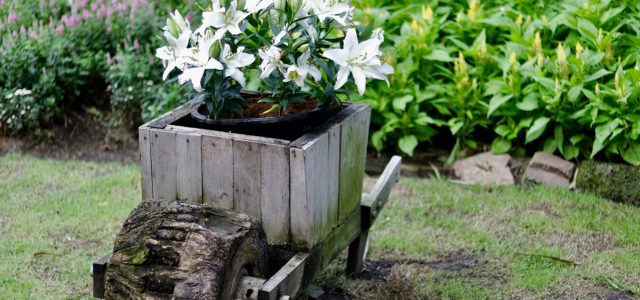
THE POTTED GARDEN: SUMMER BULBS
Growing summer flowering bulbs in containers is so simple and so rewarding, and makes any size of outside space a floral haven
Often planted in spring, you can get ahead by planting summer flowering bulbs in February towards the end of the month or in March when overnight temperatures begin to get warmer.
Bulbs tend to prefer a light, well-draining soil, so if your garden has a leaning towards wet, heavy soil then planting bulbs in pots and containers is the ideal solution. Planting in February or March, once the soil has started to warm up, helps bulbs get established quickly.
Top of the list are lilies – hardly surprising as they have the most amazing and flamboyant flowers and are packed full of scent, size and colour. From the vibrant deep pink of Lily Stargazer to the sublime pure white of Lily Regale there is a variety to suit any garden or outside space you can think of. Plant them anytime from autumn to spring, in a sunny spot, but make sure they are planted fairly deeply, 15-20cm deep.
Agapanthus are really easy to get started and growing them in pots or containers is perfect as it makes it easier to move them in the winter to protect them from frost. Often called African lilies, their strappy leaves and statuesque stems, topped with balls of beautiful coloured flowers in deep blue, purple, lavender or white, fit easily into a modern garden setting or a traditional patio space. Plant Agapanthus bulbs eight to 10cm deep and 10 to 15cm apart in good quality, well drained compost in a sunny position.
Prairie wildflowers, Liatris, are robust, herbaceous perennials much loved by bees and butterflies. They can grow up to about 1.5m tall, have mounds of grass like leaves and flower spikes of furry, thistle-like blossoms – usually purple but also in pink or white – that flower from the top down. They need to be planted around 5cm deep.
As a rule, if you are planting bulbs in any sort of container, it’s a good idea to mix multi-purpose compost – or John Innes No 2 compost for bulbs lasting more than one season – with some grit (three parts compost, one part grit).
You should also plant bulbs three times their depth and one bulb apart. Water regularly and to promote good flowering for the following year, feed with a high-potassium fertiliser such as a liquid tomato feed from the start of the growing season to when the leaves start dying back.
If pots and containers are just part of your outside space then here are some gardening tips for this month from the RHS (Royal Horticultural Society):
• Prepare vegetable seed beds and sow some vegetables under cover
• Clear beds of weeds before mulching
• Mulch flower beds with a deep layer of organic matter to help condition soil
• Prune summer flowering deciduous shrubs between February and March
• Prune winter flower shrubs that have finished flowering
• Divide bulbs such as snowdrops
• Prune Wisteria
• Prune hardy evergreen hedges and revitalise overgrown deciduous hedges
• Cut back deciduous grasses left uncut over winter and remove dead grass from evergreen grasses
• Lay turf provided soil not too wet or frosty.

